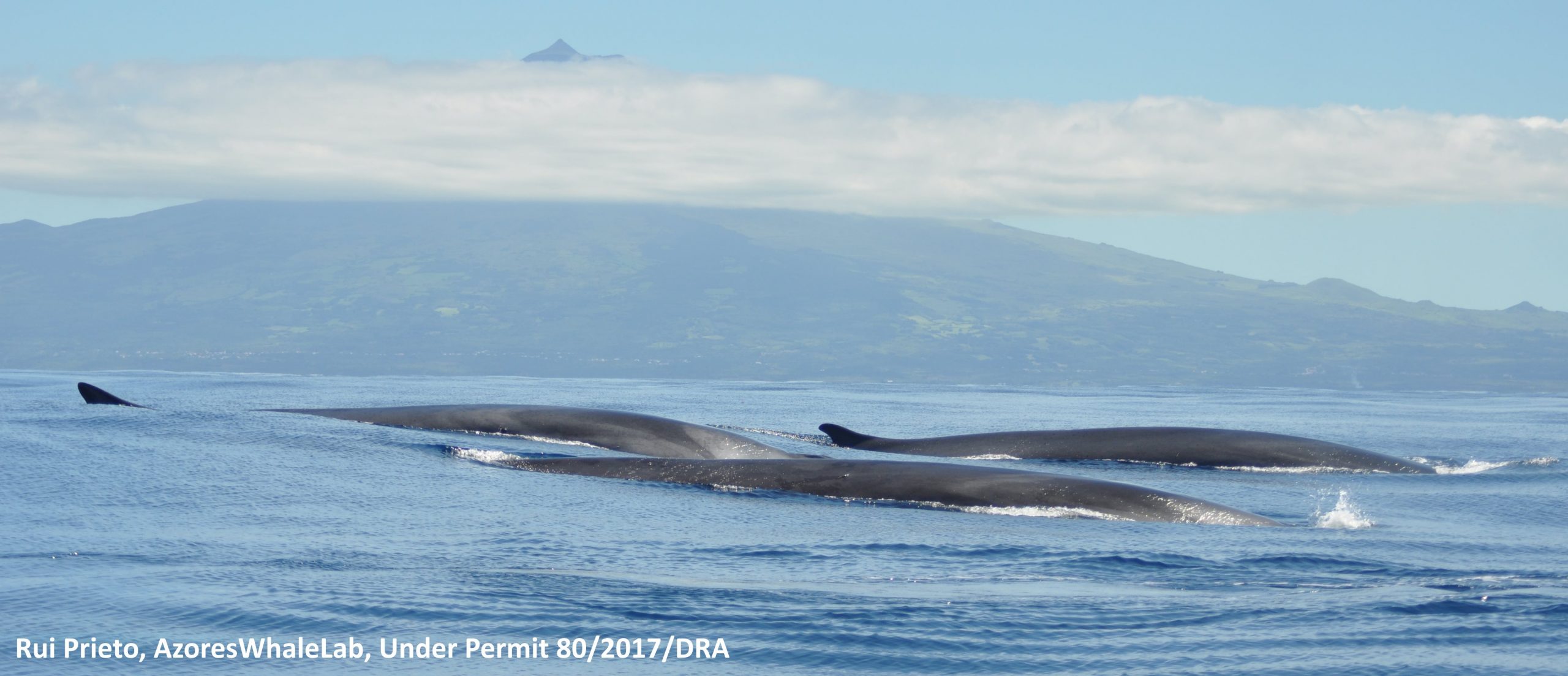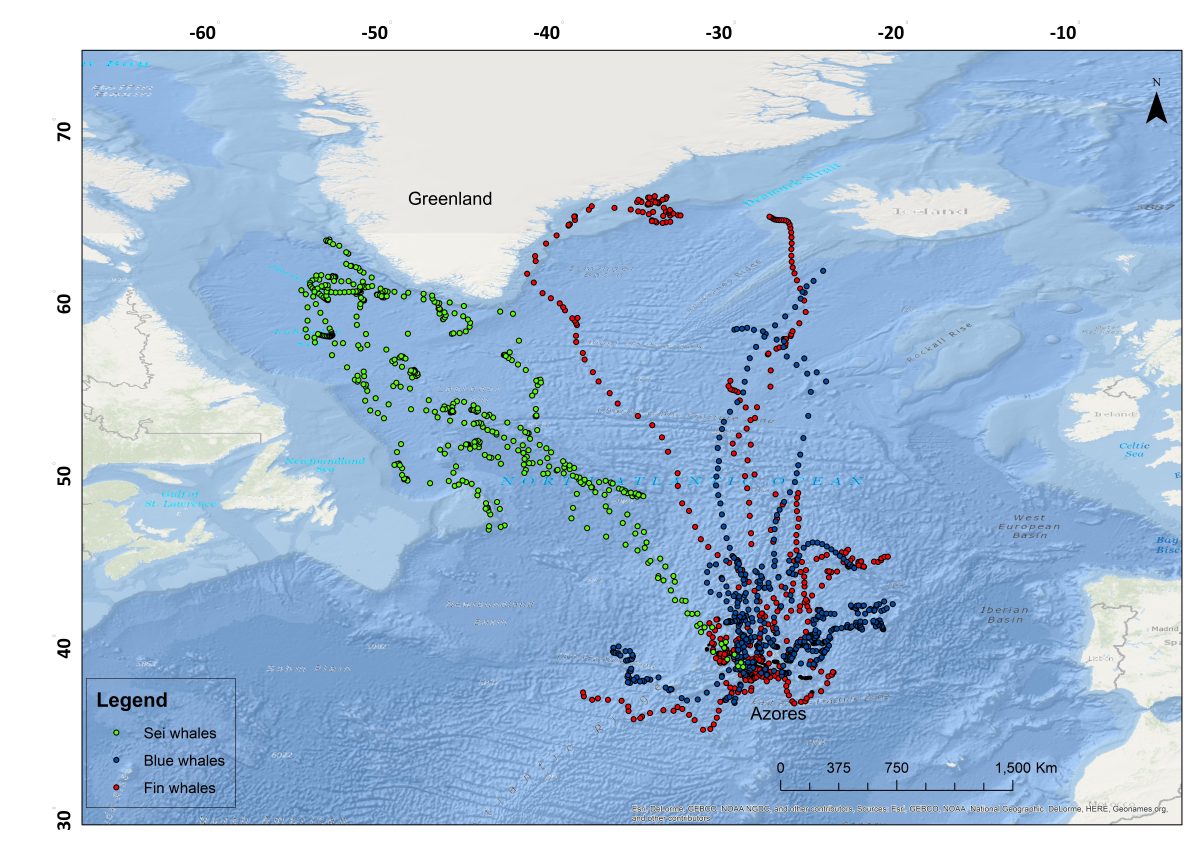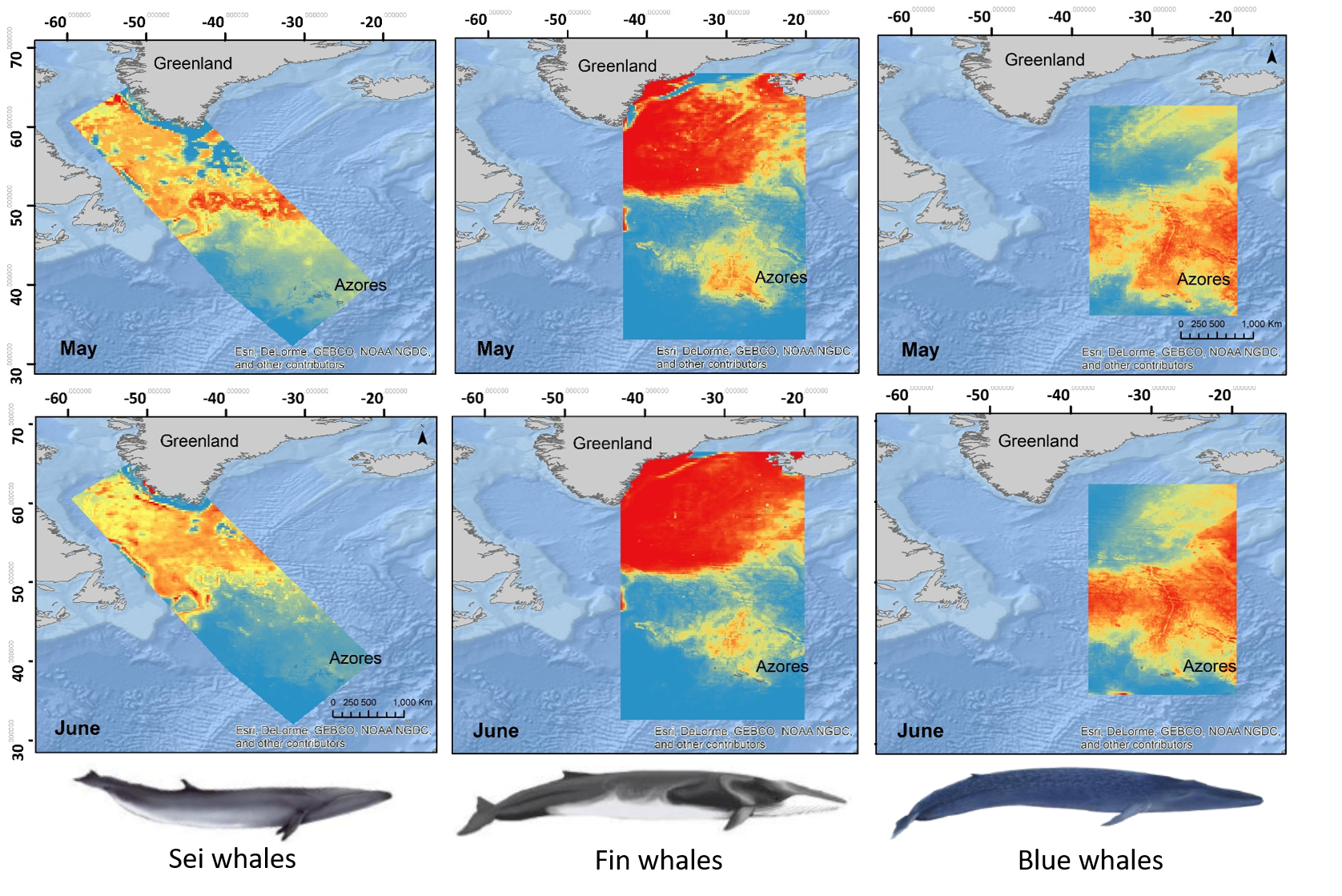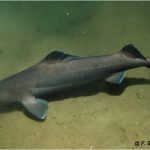← Back
Distribution of baleen whales in the mid-North Atlantic Ocean

Baleen whales are highly migratory, going from low latitude in Winter to high-latitude waters in Summer. Satellite telemetry such as Argos has improved the knowledge of their distribution and movements. Using SEAPODYM ecosystem model enables to complement the telemetry and determine the effect of environmental conditions and prey availability on the whales’ migration.
Knowledge of the distribution and movements of baleen whales
Baleen whales are among the biggest creatures ever on Earth. They are highly migratory, going from low latitude waters for breeding and calving in Winter to high-latitude productive waters to feed (in Summer), as we saw for humpback whales in the Southern Hemisphere with Argos helps in tracking where humpback whales feed and for bowhead whales in Spring in the Northern Hemisphere with Bowhead whales, auxiliary oceanographers. However, if the overall scheme is known, the drivers of those migrations, choice of migration paths included, and thus the population distribution are poorly understood. This hinder forecasting their response to ecosystem variability. Moreover, baleen whales are exposed to impacts from anthropogenic activities (e.g. ship strikes or exposing them to increased noise levels).
Advances in satellite telemetry have greatly improved the knowledge of the distribution and movements of such highly mobile marine species. However, by definition, such data “only” provide with the locations where animals were, not where they were not, with often rather small samples, thus biasing distribution estimates.
In the North Atlantic, the Azores Islands are a hotspot where numerous baleen whales are seen. AzoresWhaleLab deployed Argos tags on 31 baleen whales (15 fin whales (Balaenoptera physalus), 10 blue whales (Balaenoptera musculus), and 6 sei whales (Balaenoptera borealis) off the Azores between June 2008 and June 2016.

Whale tracks by Argos used in this study (credit AzoresWhaleLab)
More info about marine animals tracking
Use of a spatial ecosystem and population dynamics model
Marine top predator distribution and movements are tied closely to those of their prey. However, prey data are scarce, so most ecological modelling are based on proxies of their distribution. But these proxies can have a temporal lag with respect to the prey distribution (e.g., chlorophyll blooms and zooplankton which feed on it multiply only after) and also a spatial lag (e.g., since zooplankton derive with the currents). However, recent advances in ecosystem models allow the incorporation of predicted prey distributions into species distribution models.
The whale locations were thus combined with remotely sensed ocean data and with biomass derived from the spatial ecosystem and population dynamics model SEAPODYM, into a comprehensive ecological model to determine the effect of environmental conditions and prey availability on the whales’ migration.

Predicted distribution for Fin, Blue and Sei whales for May and June. The three species behave differently: predicted summer habitats are not totally overlapping, with some constants, such as moving northwards in Summer, and a constrain by depth. (credit AzoresWhaleLab)
Understand the factors shaping the movements of migratory species
This approach enabled to show that the whales’ movement patterns are mainly influenced by the interaction of temperature and prey availability, but differently depending on the species, with also an influence of depth and eddy kinetic energy for their northward migration routes. The models show that high latitudes were the preferred habitats for all three baleen whale species during summer months as expected with respect to known seasonality. However, the results also highlight that fin whales avoid intermediate temperatures, going to either cold or warm waters, sei whales privilege productive subpolar waters, while blue whales seem to target areas that were productive on previous months.
These results highlight the importance of integrating telemetry data with prey models to understand which factors shape the movement patterns of highly migratory species. They also show that the major international shipping route located in the mid-North Atlantic overlaps with the predicted preferred habitat of the three baleen whale species. So, in addition, the outcomes could contribute to inform of anthropogenic threats to baleen whales in a region which is sparsely surveyed. Findings from this study are thus relevant for national and international conservation, designation of transatlantic marine protected areas and management initiatives.
References and links
- Pérez-Jorge S, Tobeña M, Prieto R, Vandeperre F., Calmettes B., Lehodey P., Silva M.A., Environmental drivers of large-scale movements of baleen whales in the mid-North Atlantic Ocean. Divers Distrib. 2020;00:1–16. https://doi.org/10.1111/ddi.13038
- Azores Whale Lab website: http://whales.scienceontheweb.net
- Azores Whale Lab Twitter account:@AzWhaleLab
- SEAPODYM http://www.seapodym.eu/
Photo: baleen whales near the Pico Island (the mountain in the background) (Rui Prieto, AzoresWhaleLab, Under Permit 80/2017/DRA)




